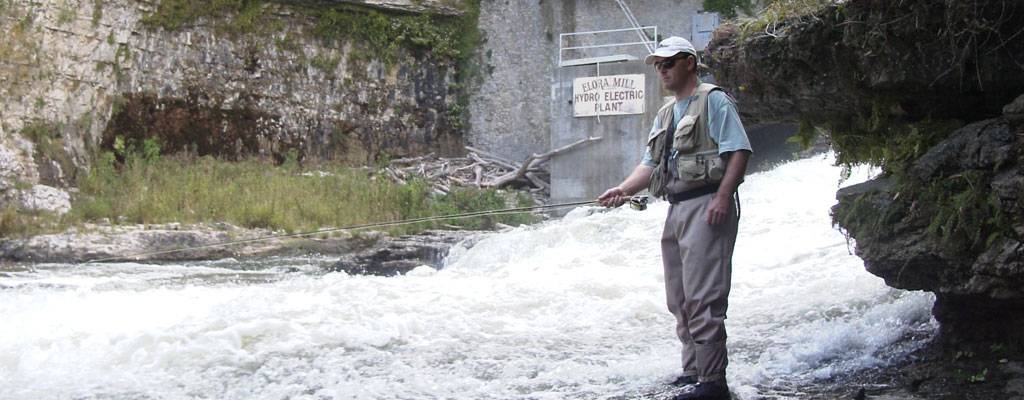
Wading Safety
by Steve May - March 15, 2008
Wading can help you access great river fishing efficiently, affordably and safely. Unfortunately, every year people run into trouble wading and some even perish. To avoid becoming one of these statistics, use your common sense. By staying within your limits, having a safety first attitude and using the right equipment you can enjoy the freedom that wading offers.
When you are new to walking in the water I recommend practicing in shallow areas with gentle current to get your “river legs”. A rule of thumb is to only move one foot at a time when wading. This will help you to slow down, keep your balance and avoid and unplanned swim.
Water depth and current speed make wading more challenging. This is amplified in cold water and water colored by higher flows. Swimming in October through April in most of Canada is definitely not recommended. If you find yourself in water where you don’t feel safe, back up and look for shallower areas with less current where you are more comfortable. A safety first decision might just allow you to fish another day. Don’t push your luck.
Other trouble spots to watch for are areas where fast flows and large boulders or downed trees mix. Getting pinned under a boulder or trapped in a tree in fast water can be deadly. It is best to avoid these areas.
For added safety try to always fish with a friend. Not only is it more fun to share your fishing experience, but there will be someone there to help if you need them.
Having the right equipment for walking in rivers will keep you safer and you will be more comfortable. A good set of stocking foot waders with proper fitting boots with dependable traction are the way to go.
Breathable waders fitted with a belt keep you dry and allow you to layer underneath for coldwater conditions. I am even comfortable fishing with ice bouncing off my waders when the proper layers are underneath. Solid wading shoes with good traction and ankle support are essential because few mountain trails offer the challenges of unstable, algae covered rocks on a river bottom. Boots with felt soles or soft rubber and metal studs provide needed traction on slippery streambeds.
A wading belt stops water from pouring into your waders after a dunking. When wearing a belt you can usually stand up or float through a small set of rapids with just a few cups of water in your waders and a bruised ego. But, without a belt you may find yourself trying to swim in a bag of water. This could be a very dangerous situation.
A wading staff is a wise investment. An old ski pole, streamside stick or telescopic staff can provide a helpful “third leg”. I have a folding staff on my belt that is always ready to help me retreat from water that is too swift or to probe the river bottom in colored water. This folding staff is something that I don’t usually go on the river without.
Don’t be afraid of wading. With some common sense it allows you the ultimate freedom to access quality fishing on rivers throughout the world. Treat rivers with respect and they will provide you with wonderful fishing experiences for years to come.
< Back to Articles





